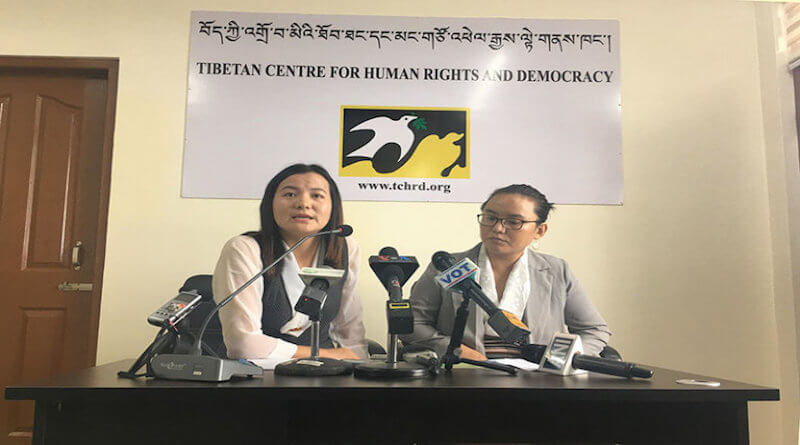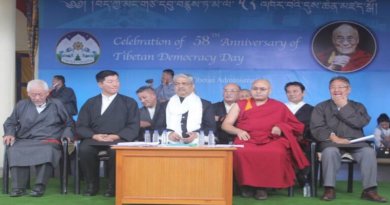TCHRD criticises China’s development model, urges world to learn lessons from Tibet

DHARAMSALA, 23 Feb: Tibetan Centre for Human Rights and Democracy, a Dharamsala-based Tibetan advocacy group today warned against the adoption and acceptance of China’s development model globally by highlights how Tibet offers important lessons into the limitations of the Chinese model of development.
“Over many decades, China has imposed on Tibet the model of development it now seeks to export worldwide, informed by the Chinese definition of the right to development,” Tsering Tsomo, executive director of TCHRD said while releasing the report, Distorted Development: Chinese Discourse on the Right to Development and its Implementation in Tibet.
“By examining China’s development policies applied to Tibet, the report seeks to provide stark warnings against the adoption and acceptance of China’s development model globally,” she added.
As China’s role in international development is growing rapidly while Beijing has already declared itself as an exemplary leader of development, vigorously exports its development model globally, the rights group warned that the development community needs to properly understand what China is really offering.
Calling the Chinese development model a short cut to development and modernity with implications on human rights, Tsomo added that “China seeks not only to offer an alternative model of development globally, but also an alternative Chinese interpretation of development as the most important human right.”
“This Chinese conceptualisation of the right to development threatens to undermine other fundamental political, civil and cultural rights by making them subservient to economic rights.”
The rights group further stated that the Chinese development model is “a perverse contradiction to the right to development as defined by the UN Declaration on the Right to Development.”
“Indeed, China’s actions within the framework of the UN in recent years have already shown its desire to change norms,” she stated in the press release.
TCHRD’s report further revealed, “how the Chinese model for development when practically implemented through a statist, top-down model, is inconsiderate of, and as a result, damaging to the collective rights of already marginalised and disempowered groups, China’s model, formulated in Beijing, is driven by state interests and political agendas that seek, in the case of Tibet, to assimilate the region and its people into the framework of a single Chinese national identity rather than to meaningfully improve the lives of Tibetans, China has sought to use Tibet to vaunt the supposedly exemplary Chinese development model and the region has become somewhat of a laboratory for Chinese development projects and approaches, as well as a showroom for delegations from developing countries to see what Chinese development can achieve.”
Highlighting the Tibetan perspective and approaches to development, the rights group’s report “dismisses official Chinese rhetoric that portrays Tibetans as uninterested, or apathetic to developing themselves.”
Calling on the world to be cautious, the group concluded by stating that implementing the recommendations in the report “can help rectify the great damage done to Tibet through the imposition of a hostile model of development as well as help prepare and inform both the international development community and the human rights community to the realities of Chinese development in Tibet.”






